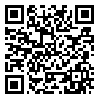BibTeX | RIS | EndNote | Medlars | ProCite | Reference Manager | RefWorks
Send citation to:
URL: http://jdisabilstud.org/article-1-1493-en.html

 , Farshad Ghazalian *1
, Farshad Ghazalian *1 
 , Hojjatollah Nikbakht1
, Hojjatollah Nikbakht1 
 , Sara Lotfian2
, Sara Lotfian2 
 , Akbar Nik Pajouh2
, Akbar Nik Pajouh2 

2- Rajaie Cardiovascular Medical and Research Center, Iran University of Medical Sciences
Background & Objectives: Cardiovascular Disease (CVD) is the main reason for morbidity and mortality in developed and developing countries. Among CVDs, coronary artery disease is the most frequent cause of heart disease, especially in the elderly. The most prevalent treatment for CVD is Coronary Artery Bypass Graft (CABG). Most patients that experience this surgery encounter mood disorders. One of the prerequisites for CVD treatment is cardiac rehabilitation, which reduces the risk of cardiac events and improves psychological disorders by physical exercise. However, depression and anxiety are conditions that affect the patient's compliance with medical advice, including cardiac rehabilitation programs. Yoga, as a simultaneous treatment of mind–body, is growing in popularity. Accordingly, the present study was conducted to investigate the effects of long–term combined exercises (yoga–cardiac rehabilitation) on depression and anxiety levels in patients undergoing CABG surgery.
Methods: This quasi–experimental study was conducted on 27 male patients (40–75 years old) who experienced CABG surgery at least one month before the research onset in Shahid Rajaie cardiovascular, medical, and research center in Tehran City, Iran, in 2019. They were randomly assigned into the control (Cardiac Rehabilitation Training; CRT, n=13) and experimental (combined yoga–CRT or COMT, n=14) groups. The study inclusion criteria included male gender, the ejection fraction of >35% based on patient's Echocardiography (ECG), the lack of comorbidities, such as kidney failure, diabetes, cancer, and severe neurological disorders, no experience of emergency heart and valve surgery, and not taking drugs for severe psychological disorders. Exclusion criteria included motor disorders that prevent rehabilitation exercises, the lack of regular follow–up and attendance during the training sessions, changes in the patients' ECG, and the aggravation of chest pain. The levels of depression and anxiety were evaluated by a Symptom Checklist–90–Revised (SCL–90–R; Derogatis, 1986) in two stages (before & after interventions). The CTR group performed a one–hour cardiac rehabilitation program with 60%–85% of maximum heart rate for 3 days a week. The COMT group performed a one–hour yoga and cardiac rehabilitation plan for 3 days a week (one session in between, 12 session rehabilitation training, 12 sessions of yoga training). The study subjects completed training sessions for 8 weeks. For understanding yoga training intensity, we used a 20–point scale of Borg’s rate of perceived exertion. The optimal pressure sensation in these patients was considered based on the results of studies equal to 11–13. Subjects who stopped attending the sessions for any reason were excluded from the study (CRT group: n=7; COMT group: n=7). Data analysis was performed using SPSS (α=0.05). The distribution of data related to research variables was studied using Shapiro–Wilk test. Dependent Samples t–test was used for intra–group comparisons and Independent Samples t–test was employed for between–group comparisons.
Results: The obtained data suggested no difference between depression (p=0.595) and anxiety (p=0.911) levels in the pretest as well as depression (p=0.727) and anxiety (p=0.268) levels in the posttest between the study groups. Furthermore, we observed a significant reduction in depression (p=0.002) and anxiety (p=0.011) levels in the CRT group. Besides, depression (p=0.006) and anxiety (p=0.047) levels significantly declined in the COMT group.
Conclusion: Considering the effectiveness of COMT and CRT interventions in our study, cardiac rehabilitation centers can offer combined training models based on their facilities and patients’ desire post–CABG surgery (i.e., because of the safety and low costs of yoga training).
| Rights and permissions | |
 |
This work is licensed under a Creative Commons Attribution-NonCommercial 4.0 International License. |


